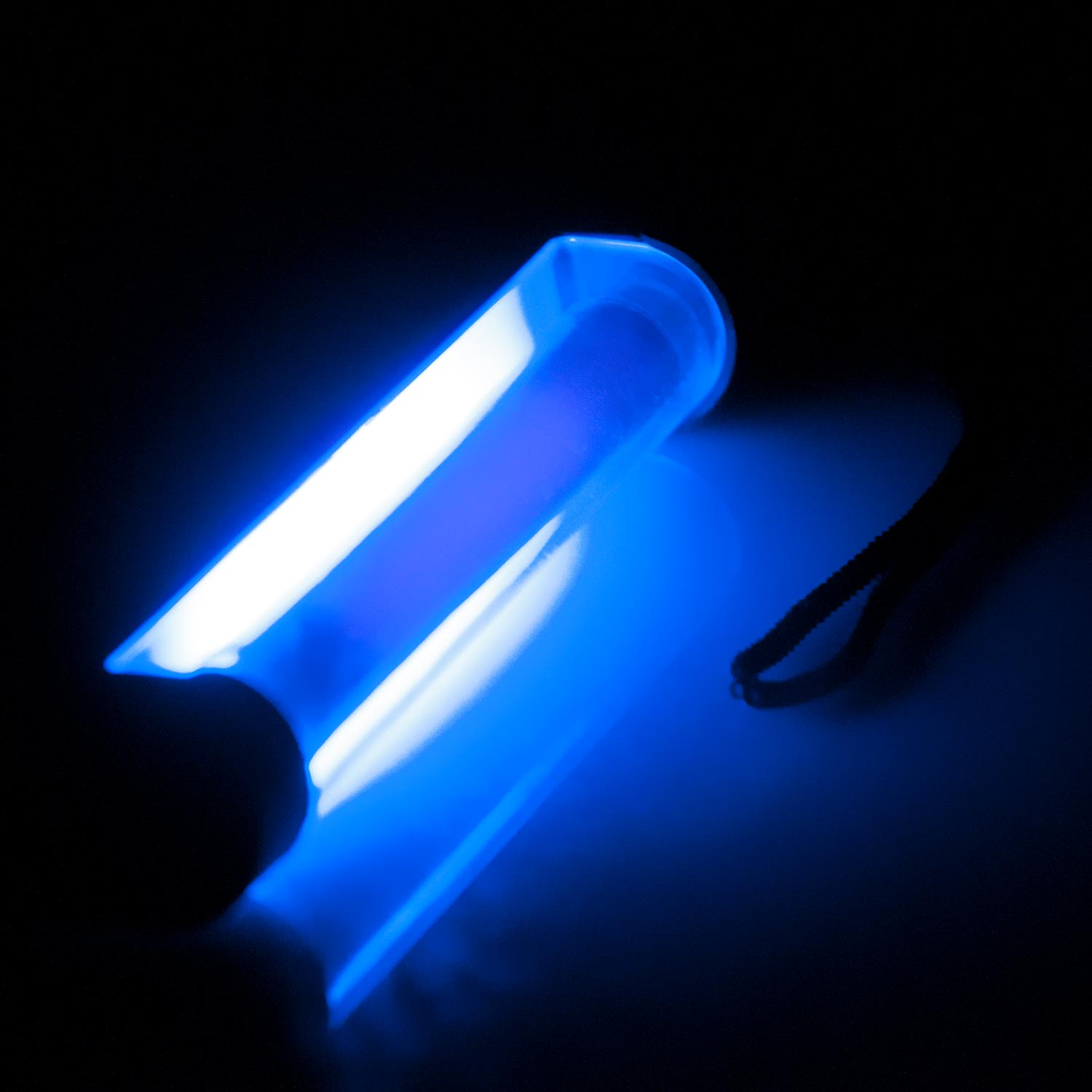- The two balls look the same but behave very differently
- Demonstrate the properties of potential and kinetic energy
- Hands on energy experiment
SKU: WBNB-125
SKU: WBNB-125
When you open the Bounce No Bounce Balls, you may think you’ve been duped or tricked. The two black rubber balls included in this bouncing ball kit look and feel the same, but try bouncing them. One rebounds in a most lively manner while the other ball is as bounceless as a piece of clay. It’s not a trick – the balls are made out of two different types of rubber. One ball is elastic, which bounces back. The other ball, however, is inelastic and lies lazily on the floor. Use the Bounce No Bounce Balls to demonstrate and explore the properties of potential and kinetic energyand perform neat tricks on friends by using the no-bounce rubber bounce ball. Ages 8 and up.
Adult supervision recommended. Bouncing balls should not be ingested.
Though each small bounce ball looks almost exactly the same, their difference lies in their composition. The Bounce Ball is made of a rubber that has spaces in between its molecules. When the Bounce Ball hits the floor, the molecules compress and rapidly decompress creating a spring reaction. The No Bounce Ball is made of a rubber with smaller or nonexistent spaces between its molecules. That means when the No Bounce Ball hits the floor it will compress very little or not at all.
The Bounce No Bounce Ball demonstration is a one-of-a-kind, hands-on experiment into molecules and their composition, but the possibilities don’t stop there. Bounce No Bounce Balls demonstrate the effects of temperature on rubber, potential energy, and conservation of energy and make a great critical thinking tool. Using the activity guide included in this bouncing ball kit, young scientists can learn more about how one rubber bounce ball bounces back while the other doesn’t. They can then apply this knowledge to other items they see every day and begin to make connections on whether or not something will or will not bounce.
Children understand physics and concepts related to energy a lot better when they have the opportunity to develop an intuitive appreciation of how energy behaves in the physical world. The Bounce No Bounce Balls kit from Steve Spangler Science gives them this kind of opportunity because they can see how the inner molecular structure of two balls affects their energy and physical behavior. When children see the identical-looking balls and then observe that one ball bounces and the other one does not, they will not soon forget the lesson that is being taught. The Bounce Ball, made of a rubber that is less dense, bounces, but the No Bounce Ball, made of a denser rubber, does not. After doing this experiment, children of age 8 and up will look at the world differently, asking themselves how the molecular structure of objects affects their physical behavior. Plus, they’ll have a cool bouncing ball kit that allows them to recreate the magic of this science experiment in front of their friends and family.
Love thought-provoking STEM toys like this bouncing ball kit? Check out our STEM science kits for other unique, thoughtful, and challenging science experiments that will get kids thinking about the world around them. More than just scientific magic tricks, our science experiment kits are designed by educators who pair learning with engaging and fun activities, which in turn inspires children to dive deeper into the world of science.
Safety Information


 Cloud in a Bottle Experiment
Cloud in a Bottle Experiment
Question
Lew Pulley –
How big are they?
(0) (0) Watch Unwatch
Staff lisabrooks –
They are 3/4 of an inch in diameter.
(1) (0)
Question
Jang –
Can i know the friction coefficient of this ball?
(0) (0) Watch Unwatch
Staff lisabrooks –
Unfortunately, we do not have this information.
(0) (0)
April Oaks –
Interesting to why one bounces and one doesn’t.
(0) (0) Watch Unwatch
Question
Mr. Mobnennil –
What is the difference in the mass between the two balls?
(0) (0) Watch Unwatch
Lisa – Customer Service Manager –
The secret is in the type of material used to make the balls. The ball that bounces is made out of a natural rubber that is highly resilient and very elastic – it’s great for bouncing. The “no bounce” ball is made out of a special type of rubber (usually butyl rubber) that absorbs the kinetic energy of the falling ball instead of changing it into potential energy.
(0) (0)
Question
Bill Morgan –
When will these be available/in stock?
(0) (0) Watch Unwatch
smack2021 –
Hi Bill. I apologize, this item has been discontinued and will not be back in stock.
(0) (0)